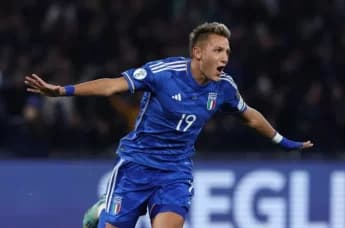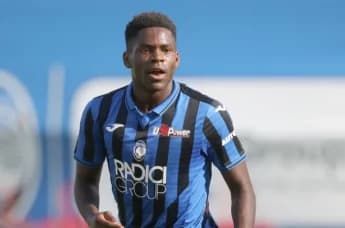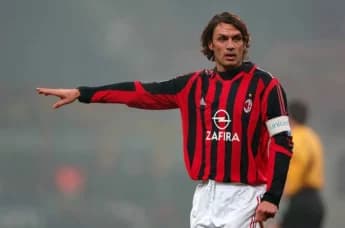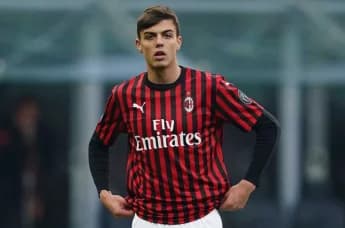Andrea Pirlo, a maestro of the pitch, transcended traditional roles in football to become an iconic figure celebrated for his technical brilliance, resilience, and groundbreaking influence on the game.
Andrea Pirlo, who was born on May 19, 1979, in Flero, Italy, stands as a monumental figure in the annals of football. Celebrated for his graceful playing style, he embodied elegance, intelligence, and technical finesse on the pitch. Pirlo’s remarkable skills as a midfielder earned him international acclaim as one of the sport’s all-time greats. His talent was characterized by unmatched vision, precise passing, and a flair for set-pieces, especially free kicks.
Pirlo's impact transcended his personal achievements; he transformed the deep-lying playmaker position. Known as 'The Architect,' he expertly managed the rhythm of the game with his calm demeanor and awareness of space, turning football matches into showcases of his creative artistry.
His career commenced in the youth academy of Brescia, where his exceptional abilities led him to make his debut at the tender age of 16. He then faced various challenges during his time with Inter Milan and Reggina before truly thriving at AC Milan. Over more than ten years with Milan, Pirlo emerged as a key figure in their midfield, playing a significant role in securing two UEFA Champions League titles and a host of domestic championships. Subsequently, his transfer to Juventus revitalized his career, guiding the Turin club to four consecutive Serie A titles and marking a comeback on the European front.
On the international stage, Pirlo was a key player for the Italian national team. His standout moment came in 2006 when he played a crucial role in securing Italy's FIFA World Cup victory. His exceptional performances throughout the tournament earned him a spot in the Team of the Tournament and he was awarded the Bronze Ball. Additionally, he guided Italy to the final of UEFA Euro 2012 and took part in numerous other international competitions, leaving a lasting legacy with 116 caps and 13 goals.
In 2017, Pirlo concluded his playing career after a short stint with New York City FC in Major League Soccer. Following his retirement, he embarked on a managerial journey, starting with Juventus and later taking on roles with other clubs in Italy, where he demonstrated his footballing acumen in a different role.
Andrea Pirlo’s legacy embodies creativity, perseverance, and a lasting influence on the perception and execution of football. His name is forever linked to the elegance and beauty of the game.
Significant Career Achievements
The career milestones of Andrea Pirlo illustrate his journey from a promising talent to a football legend. He made his professional debut with Brescia in 1995, quickly demonstrating his skills and contributing to the team's victory in Serie B in 1997, which secured their promotion to Serie A. In his early years, he transferred to Inter Milan in 1998, but it was during his loan to Reggina and subsequent return to Brescia in 2001 that pivotal changes occurred. At Brescia, playing alongside Roberto Baggio, Pirlo developed into a deep-lying playmaker, transforming both his career and the tactics of football.
Andrea Pirlo's move to AC Milan in 2001 heralded the start of his illustrious years. During his more than ten years at the club, he secured two Serie A championships and two UEFA Champions League titles in 2003 and 2007. His exceptional performances in these tournaments were remarkable, especially as he dictated play in Milan’s midfield throughout their European supremacy. Additionally, Pirlo captured two UEFA Super Cups, a FIFA Club World Cup, a Coppa Italia, and a Supercoppa Italiana, reinforcing his status as one of the most accomplished players in Milan’s illustrious history.
In 2011, Pirlo made a pivotal transfer to Juventus, where his ability to maintain top form was questioned by many. However, he proved his detractors wrong by guiding the Turin club to four consecutive Serie A championships. His exceptional vision, accurate passing, and leadership revitalized Juventus, establishing them as a dominant force in Italian football. During this period, he also secured an additional Coppa Italia and two Supercoppa Italiana titles. Significantly, Pirlo's graceful style of play earned him several individual accolades, including the Serie A Footballer of the Year award and multiple selections for the Serie A Team of the Year.
Pirlo's international achievements are also remarkable. He played a key role in Italy's victory at the 2006 FIFA World Cup, showcasing outstanding performances throughout the tournament, including a Man of the Match performance in the final against France. Additionally, he was a vital contributor to Italy's journey to the UEFA Euro 2012 final, where his authoritative presence and the iconic panenka penalty in the quarter-final against England left a lasting impression. Over his international career, Pirlo represented Italy in multiple tournaments, including four World Cups and three European Championships, amassing 116 caps and scoring 13 goals for his country.
As his playing career drew to a close, Pirlo signed with New York City FC in Major League Soccer in 2015, where he showcased his technical abilities until he retired in 2017. After hanging up his boots, he transitioned to management, beginning with Juventus and eventually taking the helm at other clubs, contributing to the sport with his tactical acumen. These achievements highlight not only the remarkable nature of Pirlo’s career but also his lasting influence on the game.
Personal Accolades
Andrea Pirlo, celebrated for his exceptional technical skills and insightful play, received a multitude of awards that cemented his status as one of the finest midfielders in football history. Below is a comprehensive overview of his individual accolades and honors:
Pirlo’s remarkable collection of awards highlights his impact not only in Italy but around the world, honoring his talent, leadership, and lasting contribution to the game of football.
Statistics
Andrea Pirlo’s remarkable career encompasses numerous clubs and international tournaments. Throughout his 22-year professional journey, Pirlo participated in 570 club matches and netted 61 goals. Most of his playing career unfolded in Serie A, where he excelled with Brescia, Inter Milan, AC Milan, and Juventus, ultimately wrapping up his playing tenure at New York City FC in Major League Soccer.
During his international career, Pirlo earned 116 caps for Italy and scored 13 goals. He played a crucial role in Italy's triumph at the 2006 FIFA World Cup, where he delivered three Man of the Match performances, and he also helped guide the national team to the final of UEFA Euro 2012. Renowned for his accuracy on set-pieces, Pirlo scored a plethora of free-kicks and penalties throughout his playing days.
Category
Statistical Value
Total Club Appearances
Five hundred seventy
Total Goals Scored for Clubs
61
International Appearances (Italy)
116
International Goals
13
Significant Accomplishments
Champion of the 2006 FIFA World Cup and runner-up in UEFA Euro 2012
Club Achievements
Two UEFA Champions League titles, six Serie A championships, and one MLS All-Star selection
Personal Accolades
FIFPro World XI (2006), Serie A Footballer of the Year (on three occasions), UEFA Team of the Year (2012)
Resilience and Comebacks
Andrea Pirlo’s journey in football is characterized not just by his achievements, but also by his resilience and adaptability in the face of challenges. These instances of determination have only strengthened his reputation as one of the most esteemed players in the sport.
Andrea Pirlo's early transfer to Inter Milan in 1998 came with its share of difficulties. Even with his undeniable talent, he faced challenges in securing playing time due to the club's abundance of attacking players and tactical inconsistencies. This led to loan stints at Reggina and Brescia, where Pirlo was able to display his abilities. Under the guidance of Carlo Mazzone at Brescia, he was transformed into a deep-lying playmaker, marking a crucial turning point in his career that significantly altered his path.
His move to AC Milan in 2001 was a turning point in his career. Pirlo thrived in this new position, skillfully directing play from the midfield and guiding the Rossoneri to success both domestically and in Europe. This era highlighted his remarkable adaptability and his ability to fully utilize his talents when placed in an optimal environment.
In 2011, AC Milan deemed Pirlo no longer essential to their plans, paving the way for him to transfer to rivals Juventus without a fee. This decision, rather than marking the end of his career, initiated a remarkable revival. Pirlo emerged as the cornerstone of Juventus' midfield, leading the team to four successive Serie A championships and reaffirming his place among the elite playmakers in the world.
Pirlo's resilience shone through during Italy's 2006 FIFA World Cup journey. His performances throughout the tournament, especially in the tense final against France, highlighted his composed nature and his capacity to thrive under significant pressure. In spite of the various challenges he faced during the competition, Pirlo established himself as one of the tournament's premier players, ultimately earning the Bronze Ball award.
Moving to Major League Soccer to join New York City FC in 2015 brought new challenges for Pirlo, as he needed to adjust to a different style of play and a new environment. Although he experienced a decline in physical pace, his football intelligence and passing ability enabled him to be an essential contributor, playing a significant role in the development of soccer in the United States.
Throughout his career, Pirlo showcased an outstanding ability to face setbacks with poise and emerge even stronger, which became a defining aspect of his legacy. His capacity to adapt, strategic acumen, and unwavering determination allowed him to excel in various roles, teams, and circumstances, establishing him as a lasting emblem of resilience in the world of football.
Heritage
Andrea Pirlo’s legacy goes beyond his impressive accomplishments on the field, representing a distinctive mix of elegance, intelligence, and creativity that few players in the history of football can rival. Celebrated as one of the greatest midfielders ever, Pirlo transformed the role of the deep-lying playmaker, infusing an artistic flair into a position typically linked with defensive tasks. His remarkable ability to control the pace of games, make extraordinary passes, and take exquisite free kicks has solidified his status as an icon.
Pirlo's impact transcends his numerous trophies and honors; he became an inspiration for a generation of midfielders and coaches, who viewed him as the pinnacle of football elegance. He excelled in high-stakes situations, exemplified by his crucial performances in the 2006 FIFA World Cup and his daring Panenka penalty against England during UEFA Euro 2012, displaying a level of composure that belied the significance of the moment.
His grace on the pitch transformed him into a cultural icon, garnering respect not only for his technical finesse but also for his character and leadership. Pirlo’s capacity to blend tactical acumen with seamless execution set a standard for aspiring playmakers around the world. His inclusion in the Italian Football Hall of Fame and several appearances in FIFA and UEFA teams of the year highlight his lasting influence.
Even after retiring from professional play, Pirlo's legacy continues to grow. As a coach, he advances his philosophy and vision, sharing the wisdom and elegance that characterized his playing career. Andrea Pirlo stands as a symbol of football artistry, a figure whose impact will resonate through the ages.
Future Perspectives
Although Pirlo hung up his boots in 2017, he now faces new challenges in his managerial career. After coaching Juventus and Sampdoria, he is steadily establishing himself as a tactician. Even though his coaching journey is still in its infancy, his profound grasp of the game positions him as a promising figure in the world of football management.
The story of Andrea Pirlo, from a budding talent in Flero to a celebrated football icon, embodies dedication, versatility, and expertise. His influence is destined to inspire future generations.







